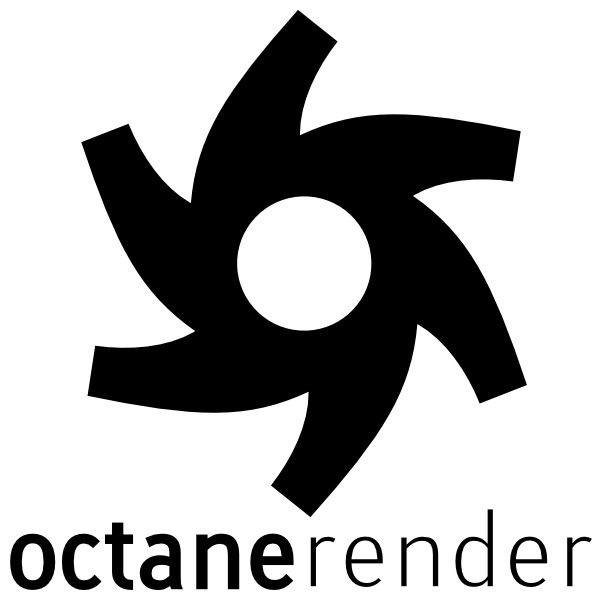Table of Contents
Introduction
OctaneRender, from OTOY, is a real-time, physically correct 3D rendering engine that uses GPUs instead of CPUs for processing. This is a relatively new approach, as traditional graphics rendering was done on CPUs instead. Graphics processors are ideal for highly parallel tasks like rendering, though, and it is easier to fit multiple video cards in a single computer than multiple CPUs.
With the launch of NVIDIA's new GeForce RTX "SUPER" series of video cards, we are taking a look at how the whole RTX lineup performs in Octane. To ensure we cover all current use cases, we included benchmarks for both the current OctaneRender 4 and the upcoming 2019 version, which includes support for the dedicated ray-tracing hardware NVIDIA added in this generation of GPUs.
Puget Systems offers a range of powerful and reliable systems that are tailor-made for your unique workflow.
Test Hardware
Here is a list of the hardware we tested OctaneBench on. Everything except the video card was kept the same throughout all the test runs, to ensure that no other specs could impact performance. The operating system was a fully updated installation of Windows 10 Pro.
| Test Platform | |
| CPU | Intel Core i9 9980XE |
| CPU Cooler | Noctua NH-U12DX i4 |
| Motherboard | Gigabyte X299 Designare EX |
| RAM | 4x DDR4-2666 16GB (64GB total) |
| Video Card | NVIDIA Titan RTX 24GB NVIDIA GeForce RTX 2080 Ti 11GB NVIDIA GeForce RTX 2080 SUPER 8GB NVIDIA GeForce RTX 2080 8GB NVIDIA GeForce RTX 2070 SUPER 8GB NVIDIA GeForce RTX 2070 8GB NVIDIA GeForce RTX 2060 SUPER 8GB NVIDIA GeForce RTX 2060 6GB |
| Hard Drive | Samsung 960 Pro 1TB |
| Software | Windows 10 Pro 64-bit (version 1903) OctaneBench 4.02.1 OctaneBench 2019 Preview |
Benchmark Details
OTOY provides a free benchmarking tool for OctaneRender, called OctaneBench. We ran this tool using both version 4.02.1 and a preview of the upcoming 2019 release, three times per card, and used the highest score for each test / GPU in the graphs below.
| Testing Hardware | |
| Motherboard: | Gigabyte MW51-HP0 |
| CPU: | Intel Xeon W-2125 4.0GHz (4.5GHz Turbo) 4 Core |
| RAM: | 8x Kingston DDR4-2666 16GB ECC Reg (128GB total) |
| GPU: | NVIDIA GeForce GTX 1070 Ti 8GB NVIDIA GeForce GTX 1080 Ti 11GB NVIDIA Titan Xp 12GB NVIDIA Titan V 12GB NVIDIA GeForce RTX 2070 8GB NVIDIA GeForce RTX 2080 8GB NVIDIA GeForce RTX 2080 Ti 11GB NVIDIA Titan RTX 24GB |
| Hard Drive: | Samsung 960 Pro 1TB M.2 PCI-E x4 NVMe SSD |
| OS: | Windows 10 Pro 64-bit |
| PSU: | EVGA 1600W P2 |
| Software: | Redshift 2.6.22 Demo Benchmark (Age of Vultures scene) |
Benchmark Results – OctaneBench 4.02.1
Here are the OctaneBench 4.02.1 results for all of the GeForce RTX video cards, along with the TITAN RTX for good measure, sorted from most to least expensive – with the new SUPER series cards in a darker shade of green:
And here is another way of looking at the results, as percentages relative to the GeForce RTX 2060's performance:
Benchmark Results – OctaneBench 2019 (RTX)
Next up, here are results from OctaneBench 2019 Preview, with RTX technology enabled, across the same video cards:
And once more, the relative performance of each card with the RTX 2060 as the baseline:
Analysis
It looks like the new GeForce RTX 2070 SUPER and 2080 SUPER cards are just incremental improvements over the previous models, but since they are the same price as the cards they are replacing that is nothing to complain about. However, the RTX 2060 SUPER is a different story: it is a little more expensive than the vanilla 2060 – but it is also over 25% faster! It has 8GB of memory instead of 6GB as well, putting it on par with the various 2070 and 2080 cards in that regard.
Nothing changed at the top-end of NVIDIA's line, though. The TITAN RTX is still the fastest card overall, but considering that it is twice the price of the RTX 2080 Ti, only about 5% faster, and isn't available in a single-fan (blower style) card it isn't really a good deal. Seemingly the only reason to opt for the TITAN with OctaneRender would be if you needed the larger VRAM (24 vs 11GB) and you only wanted to use a single GPU (or maybe two at most, in a system with tons of airflow). If you need lots of memory space but also want multiple GPUs, take a look at the Quadro RTX line instead.
Conclusion: What Are the Best Consumer GPUs for OctaneRender?
Because of the Titan RTX's cooling limitations, and how well Octane and other GPU rendering applications scale across multiple cards, the best choice for most users is going to be the GeForce RTX 2080 Ti. The new RTX 2060 SUPER also offers great performance for the price, and the other SUPER series cards provide small increases in rendering speed for the same price as previous models.
Puget Systems offers a range of powerful and reliable systems that are tailor-made for your unique workflow.

